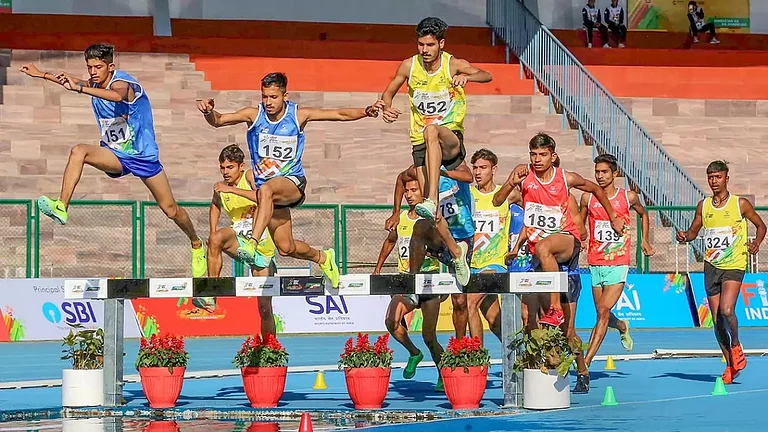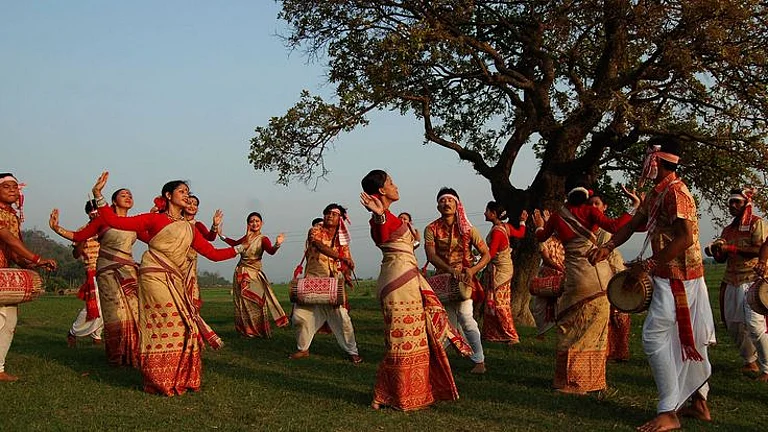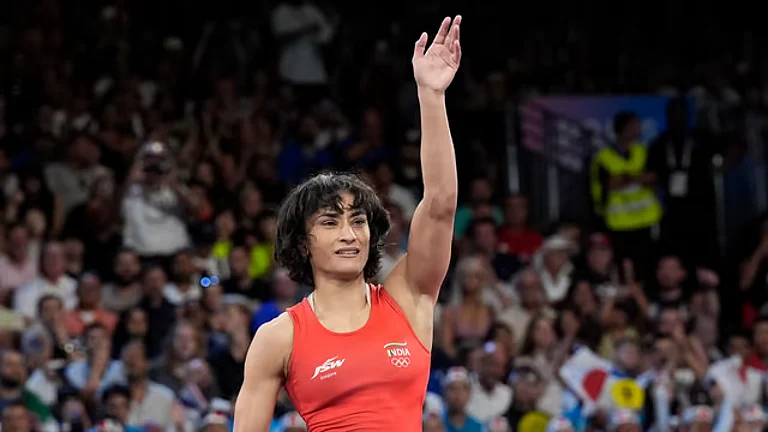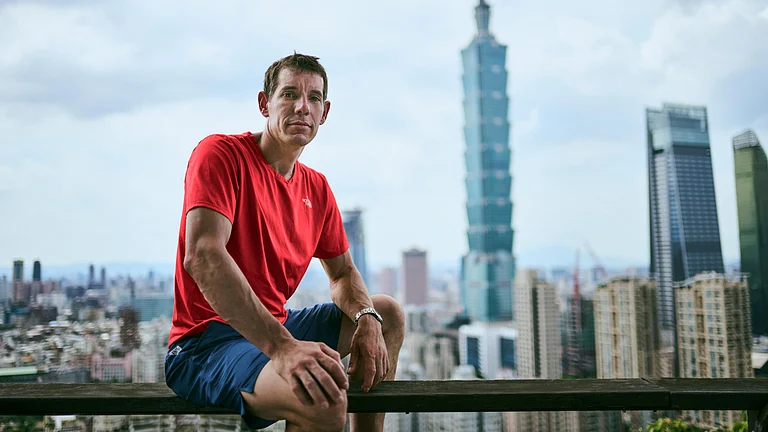“Hidden in the jungles of Eastern Chhattisgarh, a remote tribal district is rewriting the future of adventure sports in India. Here, granite cliffs meet fearless youth, and exploration is more than sport—it’s social change.”
Jashpur, a subtropical district, is locally known for its rich tribal heritage and untouched natural beauty. This deep-rooted tribal culture and pristine landscape call out to explorers—and it certainly called out to us. As Team Pahadi Bakra Adventure, we first embarked on a personal journey, which evolved into a larger mission: Project Backyard, our brainchild with the sincere intent to explore Chhattisgarh, identify and enjoy its hidden gems, and thoughtfully develop them into adventure destinations.
What began as a grassroots exploration has evolved into a transformative movement that’s redefining adventure tourism in India. From uncovering untouched rock faces to training fearless local climbers, Project Backyard has turned Deshdekha from an unknown tribal forest into a thriving climbing and outdoor hub—complete with rock climbing sectors, highlines, hiking trail circuits, and a growing community of native & tribal athletes rewriting the rules. Backed by community-first thinking, sustainable development, and pure love for the outdoors, this initiative is proving that world-class adventure doesn't need to come at the cost of culture or ecology. For those who believe in the power of sport to shift narratives and shape futures, Jashpur is fast becoming a living case study in what meaningful, inclusive exploration can look like.
From Curiosity to Climbing Culture: Birth of Project Backyard

We launched Project Backyard, an initiative born from our passion to explore, experience, and thoughtfully develop potential adventure destinations across Chhattisgarh. Jashpur was the first chapter in our mission to highlight the state’s lesser-known regions and promote sustainable adventure tourism.
Chhattisgarh Climbing Initiative (CCI) and Deshdekha Climbing Sector

As we explored the region for potential activities, bouldering clearly stood out. We chose a site called Deshdekha, originally developed as a camping ground to protect tribal lands and minimize ecological damage, the landscape was scattered with stunning rock formations. However, as we worked along with the unwavering support of the locals and valuable on-ground guidance from Samarth Jain, who played a key role in facilitating regional coordination and community outreach.
“Today, it has become home to sport climbing and traditional climbing routes, a highline point, multiple hiking trails (following village trails exclusively), 100s of kilometres of trail running circuits, bike touring loops, and much more. It took 16 months, the effort of hundreds, and the trust of countless individuals to bring Deshdekha to a life as an adventure destination — and we’re just getting started.”
“We didn’t just want an adventure destination—we wanted a living model where tribal youth take the lead and nature is never compromised,” says Dr. Ravi Mittal, IAS then Collector of Jashpur, whose support helped shape the project’s long-term direction. His steadfast support and foresight played a pivotal role in shaping the project’s direction. Alongside him, the unwavering passion and ground-level efforts of Swapnil S. Rachelwar has formed the backbone of this mission.
“Their unique, inclusive approach—rooted in the local culture, respectful of tribal traditions, and focused on long-term impact—is redefining how adventure tourism can serve both people and place.”
Deshdekha: A Tribal Backyard Becomes India’s Next Adventure Destination

“The transformation didn’t begin with imposing an external model—it began with listening.”
Through patient and thoughtful engagement, the initiative welcomed native tribals into the process, ensuring that they were not only involved but at the forefront. What was once their untouched backyard is now emerging as a world-class adventure destination—developed thoughtfully, backed by the government, and run by the locals themselves.
Firstly, we established 4 distinct climbing areas, with a fifth on the horizon (Bouldering field, King’s view area, Temple area, Forest Bouldering area). Our initial development phase, spearheaded by some of the finest climbers and educators of the country, Jerry from Hampi and Sachin with his student Ayush Vartak from Lonavala, saw us establish over 40+ Bouldering problems and 14 Sport/Top rope routes in just 6 days! We focused primarily on the impressive "Temple Area" and the Field area.
Introduction and Selection of the local team

While actively engaging with nature and admiring so much that it offers, we knew it was time to get the local youth involved. That’s how our first local climbing team began—10 young tribal / native people, full of energy and courage. These are some of the most natural and fearless climbers we have ever encountered—proving the thought that people deeply connected with nature often possess an innate talent for outdoor adventure. With proper guidance and exposure, they are capable of performing at par with global standards.
“Take Ravi, a 29-year-old mechanic from a town near Deshdekha, who hadn’t even heard of climbing gear a year ago. Today, he’s become the top rope guide from PCGI, USA, leading 6b routes, guiding visiting climbers, and dreaming of scaling Himalayan peaks.”
These young climbers are living proof that where there’s a will, there’s a way. Many of them juggle part-time jobs, support families, or fund their own education. Despite it all, they show up—with curiosity, courage, and a hunger to grow. Their energy is not just inspiring—it’s redefining what potential looks like in the outdoors. Many of them see their privileges as an opportunity to give back.
They work with initiatives and NGOs to raise awareness about sensitive and often taboo topics like tribal abduction, drug misuse, AIDS, safe intercourse, and more.
“They may have started as our students—but today, they’re our teammates and an important part of our climbing family. Watching them climb is like watching instinct meet discipline. These young climbers are not just learning—they’re rewriting what it means to be world-class, from the most unlikely places, says Swapnil.”
Phase two expanded the vision. The team explored deeper into the Temple Area and King’s View—adding over 30 new Sport, Trad, and Top Rope routes. A new scenic highline came to life, and bouldering zones stretched further into the forest. Adventure safety workshops reached 600+ locals, building skills and awareness in the region. The entire team consisted of Swapnil Rachelwar, Ishan Gupta, Sagar Dubey, Amrit Appaden, Dave Gates, Yash Parikh, John Rinaldi, Gaurav J, Kshitij Mittal, Neil D’sa and Harshdeep Pawar along with the recently trained team of local tribal climbing guides.
“With consistent efforts and global community support, the area now hosts over 200 climbing routes, hundreds of kilometers of trail networks, more than four dedicated camping sites, and a growing number of tribal homestays—making it one of India’s fastest-growing grassroots adventure hubs.”
Beyond Sport: Trail Running, Climbers Gatherings, Highlining & The Impact

Winter Wonderland Trail run – With an aim to conduct our ambitious 160 km run in this promising area that we have discovered, in Feb 2024, Jashpur administration along with RunnersXP organized State’s first ever National Open Trail Running event with 36 participants from across neighboring states, including a dozen high-ranking government officials as well covering an area of 30km with 1400 metre elevation gain.
With obvious winners from the local tribal community, the results spoke for themselves—with many of the top finishers emerging from the local tribal community. Notably, a young tribal woman from a remote village, Sonia Bai, secured the 7th position, running shoulder to shoulder with seasoned athletes from across the country.
“We’ve always run through the forest—chasing cattle, fetching water, walking to school. But this was different,” she said with quiet pride. “I never thought our daily life could be a sport. Running through the jungle—not for necessities, but for a national event—was surreal. I never imagined I could do something like this. But now I feel like... maybe I can do this more often.” Her words capture what this initiative aims to unlock—not just skill or exposure, but a shift in self-belief. This event proves our point of, If we can provide Tribal people with proper exposure to the adventure world, they would do wonders.

International Climber’s gathering – Making its debut in February ‘24, the event marked a significant milestone. First time in the state of Chhattisgarh, this event witnessed the State government supporting us in promoting Adventure sports as a means to empower locals, impact the future generation. Bordered by the CCI this gathering brought together members of the climbing community, who participated enthusiastically and contributed immense knowledge and support. Through this event, we could raise awareness about the initiatives and efforts undertaken, offer the new local climbers an opportunity to connect with some of the finest athletes and gain exposure to the worldwide community to continually learn from the experience.
“These events have done more than celebrate sport—they’ve spotlighted tribal and native talent, placing them first and foremost on the stage of adventure. With every kilometer run and every climb achieved, they are stepping into a larger world of opportunity, gaining visibility, experience, and connections that once felt far removed from their reality.”

Second highline of Chhattisgarh – While organizing the Trail Run and Climber’s Gathering, it felt only natural to explore other adventure sport possibilities in the Dregion. That instinct led to something special. Some of the country’s finest highliners generously took time out of their schedules to support the initiative and share their expertise. Working closely with the CCI team, these highliners guided the process of scouting for suitable highlining zones—and their efforts paid off. Together, we discovered what is now considered one of the finest highline locations in the region. Spanning 60 meters, the line offers a stunning, often-overlooked view of Madheshwar Parvat and Mayali Dam. Aptly named “Mountain Goat,” this line is set to become a new highlight in India’s highlining map.
The Future: From Backyard to Himalayas

Along with all the above events contributing to the exposure, development and future of this exemplary region, we are now at a stage where the next step is to expose our local tribal climbers from this region to experience the Himalayas. The expedition is called “Alpine style Tribal Himalayan Expedition” and will be “India’s first of kind expedition” that will be aligned to give the Alpine experience to the tribal youth from the remote areas via Climbing, Mentorship and Mountain exploration.
What makes this even more special is the unified backing it carries. The expedition is supported by a growing circle of individuals, organizations, and outdoor communities who believe in the vision, along with the active involvement of the state government.
“Together, this collective effort aims to open a new window of opportunity—taking the strength and spirit of these young climbers from their backyard to the world’s greatest ranges in their own country.”
Adventure as Education: The Outdoor Clubs

As part of our ongoing mission to promote adventure sports as more than just a hobby, many institutions have taken significant steps forward—bringing local schools from Chhattisgarh, into the fold. These schools have begun adopting the initiative’s Outdoor Club model, which introduces students to the world of the outdoors while highlighting the career opportunities that adventure sports can offer.
“Through school trips, hands-on activities, and real-world exposure, young minds are getting a first taste of what the adventure field holds. This initiative marks a major milestone in our journey as we continue to explore and develop new regions across the country.”
Community First: Tourism that Gives Back

“Deshdekha Climbing Sector offers more than just world-class adventure—it's becoming a benchmark for community-driven and sustainable adventure tourism. We didn’t come to build something for the locals. We built it with them,” says Swapnil S. Rachelwar, who has led the on-ground development of Deshdekha since day one.
The local government has played a crucial role by creating dedicated camping spaces as mentioned earlier, and to further empower the local community, authorities have also introduced a permit fee for all adventurers visiting the sector for sport activities. What makes this unique is that the fee is collected directly by a local self-help group from a nearby tribal village, ensuring that the economic benefits stay within the community.
As the number of visitors rises, local residents are stepping in to provide home-cooked meals prepared with fresh, locally sourced ingredients—served on traditional handmade leaf plates in their newly opened homestays. This not only supports the local economy but also promotes sustainable, eco-friendly practices rooted in regional traditions.
The project moves forward with clear goals and practical steps, focused on growth that respects the local way of life and culture. Backed by government policies, it follows strict safety and environmental guidelines to keep the balance between adventure and community well-being.
The plan is to build on this model, expanding it across the region while connecting it to local agriculture, education, and crafts. Regular dialogue with tribal leaders and youth keeps the community involved and heard. Challenges are openly addressed, and risks are managed to keep the initiative grounded and sustainable.
Alongside this, efforts in marketing and outreach — with help from partners like Kaffee Media — aim to put Jashpur on the map as a responsible adventure spot, creating opportunities for the locals without compromising their traditions.
“Crucially, we promote Leave No Trace ethics from day one, emphasizing minimal impact on this pristine environment. With responsible practices and community at the heart of everything, Deshdekha is not just a climbing destination—it’s a blueprint. For how India can explore ethically, empower locally, and elevate adventure into a force for lasting change. The summit is only the beginning.”





















